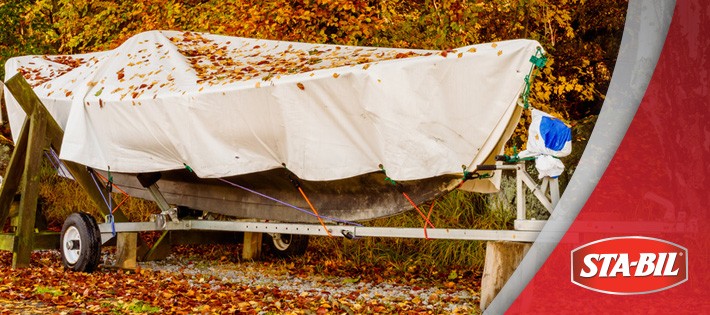Winterising Your Boat
After a long summer of boating it’s important to ensure you take all the right steps in winterising your boat for the cold months ahead.

There are a number of precautions you should take which will make sure your boat is ready to go when summer rolls around. Whilst the correct procedure will vary depending on a number of factors, this guide will get you pointed in the right direction.
Step 1 – Unpacking and cleaning the boat
After months of boating you are likely to accumulate a host of bits and pieces in your vessel. Things like food, drinks, electronics, valuables and cushions are likely to go off, freeze or become lost during storage months. You don’t want to be pulling the cover off for the first time after storage and experiencing the horrible stench of a six month old half-eaten sandwich. If you have space in the garage, water ski equipment such as skis, vests and ropes are best taken from the boat, providing the perfect time for any maintenance on these valuable pieces of equipment.
An empty boat allows you the opportunity to give its interior a thorough clean; ensuring seats and carpets aren’t left covered in debris. Whilst cleaning the inside it’s also important to clean the exterior of the boat as well, any dust and gunk above and below the waterline will only get worse during periods of inactivity.
Step 2 – Engine Maintenance
There are a number of things you must do to your engine before storing it throughout the cold winter months, particularly if the boat is to be stored in cold or freezing conditions. Fogging oil should be used to maintain a thin corrosion inhibiting protective layer on the engine’s internal parts. By doing so, you will be able to help prevent metal-to-metal contact upon restarting your engine next boating season.
A fuel stabiliser such as STA-BIL Marine will ensure that your fuel will not go “off” during periods of inactivity. It will also ensure water is removed from fuel and prevent ethanol related engine damage. STA-BIL Marine can be used after every fill-up and during periods of storage
The winter months are also a good opportunity to make any repairs to your boat’s engine whilst it’s off the water. A marine mechanic will best be able to provide your boat’s engine with a thorough service
Step 3 – Cover the boat
During periods of inactivity it is essential to cover your boat. Covering your boat with a full fitted cover will protect its interior and exterior. A high quality fitted cover will not only cover the interior of your boat, it will protect the rest of your hull from unwanted damage during storage and travel. For added protection, where possible you should keep your boat under cover and out of the elements.
Step 4 – Batteries
Your boat battery should be disconnected and ideally left on a float charge during the winter months. There is nothing worse than backing your boat down the ramp on the first day of summer to find you have a flat battery!
This winter, be sure to take the proper precautions to ensure your boat doesn’t encounter any issues when you get back on the water next summer.